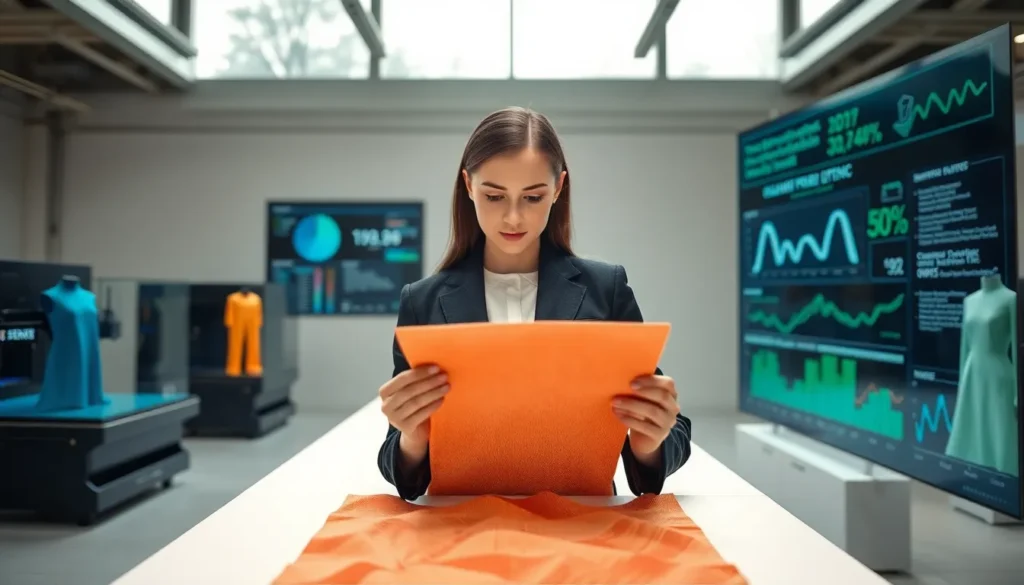In a world where fast fashion is as trendy as your favorite TikTok dance, sustainable fashion technology is the true superhero we didn’t know we needed. Imagine a clothing industry that doesn’t contribute to landfills or pollute the oceans but instead thrives on innovation and environmental responsibility. Sounds like a dream, right? Well, buckle up. We’re diving into this stylish revolution that’s turning fashion on its head, making it eco-friendly and socially responsible, all while keeping your wardrobe chic. Because let’s face it, who doesn’t want to look good while saving the planet?
Table of Contents
ToggleThe Importance of Sustainable Fashion

Environmental Impact of the Fashion Industry
Fashion isn’t just about catwalks and haute couture: it significantly impacts our planet. The fashion industry is among the top polluting sectors. From the toxic chemicals used in dyeing processes that poison waterways to the immense amount of waste generated, you could say it’s a fashion faux pas of epic proportions. In 2021 alone, over 92 million tons of textile waste were created globally. Imagine that much fabric just lying in landfills. This alarming statistic underscores the urgent need for sustainable practices.
Social and Economic Considerations
But wait, there’s more. Sustainable fashion technology isn’t merely an environmental try: it also addresses social and economic issues. Many garment workers lack fair wages and safe working conditions. By adopting ethical sourcing and production practices, fashion brands can uplift the entire industry. It’s a win-win situation: workers receive fair compensation, and customers can rock their new outfits knowing they’re contributing to a just cause.
Innovative Technologies Reshaping Fashion
3D Printing in Fashion
Ever thought about wearing a dress that’s literally printed? Enter 3D printing, the game-changer of sustainable fashion technology. This revolutionary technique allows designers to create clothing piece by piece, reducing fabric waste. Want a custom fit? No problem. With 3D printing, personalization is just a stitch away.
Digital Fabrication and Customization
Digital fabrication goes hand-in-hand with 3D printing. It allows for rapid prototyping and efficiency in production. Brands can quickly iterate designs, minimizing overproduction. Now that’s music to any eco-conscious consumer’s ears.
Smart Textiles and Wearable Technology
Let’s not forget smart textiles. Imagine clothes that adjust to temperature, monitor your heart rate, or even charge your phone. This isn’t science fiction: it’s the future of fashion. These innovations not only enhance functionality but can also lead to less waste as consumers invest in high-quality, tech-savvy garments.
Recycling and Upcycling Technologies
Biodegradable Materials and Fabrics
Saying goodbye to non-biodegradable materials is crucial in sustainable fashion technology. Designers are now experimenting with biodegradable textiles made from organic materials, such as cotton or hemp. These fabrics decompose naturally, reducing landfill contributions at the end of their life cycle.
Closed-Loop Production Systems
Closed-loop systems are another exciting trend. This approach focuses on recycling old textiles into new products, effectively creating a circular economy. By binding the lifecycle of clothing, these systems minimize waste and use fewer resources. Can you imagine wearing a tee made entirely from recycled bottles? Now that’s sustainable.
Consumer Awareness and Participation
Educating Consumers on Sustainable Choices
Knowledge is power, right? Educating consumers on sustainable fashion is essential for driving change. People need to understand the impact of their choices. Awareness programs and transparent labeling help help informed decisions, transforming the consumer base into eco-warriors. They should feel encouraged to ask, “Where was this made?” and, “Is this biodegradable?”
The Role of Digital Platforms in Sustainability
Digital platforms also play an integral role in promoting sustainability. Social media influencers are championing brands that prioritize ethical practices, encouraging their followers to make responsible choices. Online communities dedicated to sustainable fashion are popping up everywhere, creating a space for shared ideas and innovations.
Challenges and Future Directions
Balancing Innovation and Sustainability
While the future looks bright, challenges still loom large. Balancing cutting-edge innovation with sustainable practices can be tricky. Some technologies come with their own set of environmental impacts. The need for rigorous assessments is paramount to ensure that advancements in fashion do not trade one problem for another.
Regulatory and Industry Standards
Regulations and industry standards also need to catch up. As technology evolves, so must the policies that govern it. Robust frameworks are necessary to ensure companies hold themselves accountable. Consumers deserve to trust that their favorite brands genuinely commit to sustainable practices.

